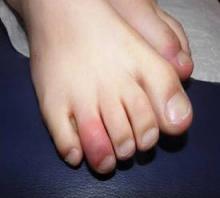SAN FRANCISCO – Cutaneous reactions are starting to be seen in children on stimulant medications for attention deficit hyperactivity disorder.
Methylphenidate hydrochloride (Ritalin) was associated with acute generalized exanthematous pustulosis (AGEP) in a recent report of a 9-year-old boy being treated for ADHD (Arch. Dermatol. 2011;147:872-3). Dextroamphetamine plus amphetamine (Adderall) was associated with pernio in a separate report of a 9-year-old girl also being treated for ADHD (J. Am. Acad. Dermatol. 2011;64:1218-9).
Before the report of AGEP and Ritalin use, "I had not heard of it related to stimulant therapy," Dr. Robert Sidbury said at the SDEF Women’s and Pediatric Dermatology Seminar, sponsored by Skin Disease Education Foundation (SDEF).
One could be skeptical about a single report of AGEP associated with Ritalin, he acknowledged, but in the case of pernio and stimulants, "I’ve now had three cases of kids who developed this reaction to stimulant therapy," he said. "I believe this to be true."
Both have dramatic presentations that can alarm parents and physicians. "It’s nice to know you can just link it to a certain medication," said Dr. Sidbury, chief of dermatology at Seattle Children’s Hospital. "That can cause a lot of relief."
AGEP is a shower of very small pustules that can be related to a variety of medications. The child in the first report had been taking Ritalin for 6 weeks. Pathology showed sterile intracorneal pustules with mixed eosinophilic infiltrate. A lymphocyte transformation test was positive for AGEP. The patient stopped Ritalin, was treated with topical and systemic steroids for the AGEP, and "did just fine," he said.
Previously, Ritalin has been associated with other cutaneous reactions including morbilliform eruption, urticaria, and even alopecia.
Pernio, also known as chilblain, is a distinctive vasoactive reaction with asymptomatic erythema progressing to blue discoloration of a toe. Its dramatic presentation – "blue toes kind of coming out of nowhere" – can make physicians worry about potential vasculitis, connective disease, or other problems, Dr. Sidbury said.
The second published report described a child who had been taking extended-release Adderall for ADHD for 6 months, was otherwise well, and had no known triggers for pernio such as exposure to cold. The pernio resolved 4 weeks after discontinuing the medication.
Pernio traditionally has been described in Wisconsin hunters with wet socks and cold (but not extremely cold) exposure of the extremities. "In a susceptible population, you get almost a Raynaud’s-type phenomenon," he said. In the case of pernio from stimulants, patients don’t get the classic red, white, and blue cutaneous changes described in the hunters, "you just get a very classic blue-looking toe."
Mechanistically, it makes sense that stimulants could have this sort of reaction in susceptible individuals, he added.
Dr. Sidbury said he had no relevant conflicts of interest.
SDEF and this news organization are owned by Elsevier.


